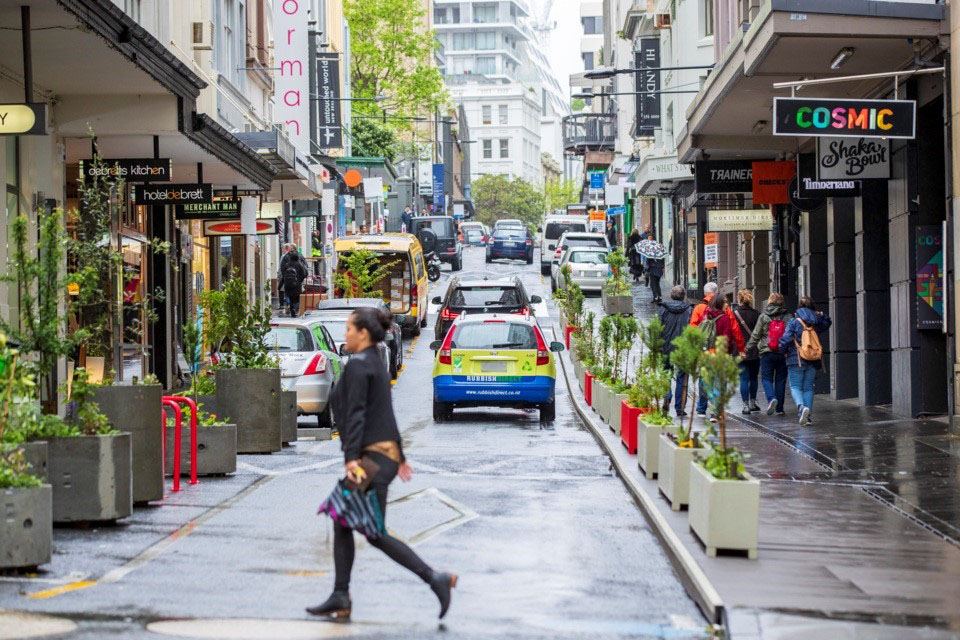The High Street District in Auckland is recognised and valued as an area with distinctive heritage character. Its shops, cafés, restaurants and bars, character offices and residential conversions make great use of historical building stock and streets, lanes and squares, creating enjoyable places to be.
Access for Everyone is a concept that rethinks how city centre streets are used to ensure people walking, riding bicycles and other mobility equipment, as well as people using public transport, can move freely. Access for Everyone preserves access for people driving that need to be here, such as those making deliveries, servicing homes and businesses, and people with specific mobility requirements. It responds to the challenges of a growing city centre.
The High Street Pilot Project is one of the first stages of a wider series of trials of Access for Everyone for the Downtown East. This area is centred on Shortland, High, Fort and Queen Streets between Custom and Victoria Streets.
The High Street Pilot Project is working towards a more accessible High Street that works better for people. By trialling changes in the street that are created and tested with the community the project aims to make High Street a place where:
During the lifecycle of this pilot, the distribution of street space will evolve to prioritise people, operations and street functions.
These investigations and consultation with stakeholders will also inform the longer-term upgrade of High Street, for which budget is currently sitting in the 2022–2024 financial years.
Stage 1 of the High Street Pilot Project was installed on 15 October 2019 between Shortland Street and Vulcan Lane. The changes included the removal of 13 on-street parking spaces to allow for:
Stages 2 and 3 will extend the trial area and make further enhancements.

Broadly, stakeholders who are in engaged with the project are supportive of the changes that have been made so far. They are also supportive of further prioritisation of space for people, and increased loading areas up the street.
The public generally liked Stage 1. When asked to explain the reasoning behind their response, people said they approved of:
View the short video below.